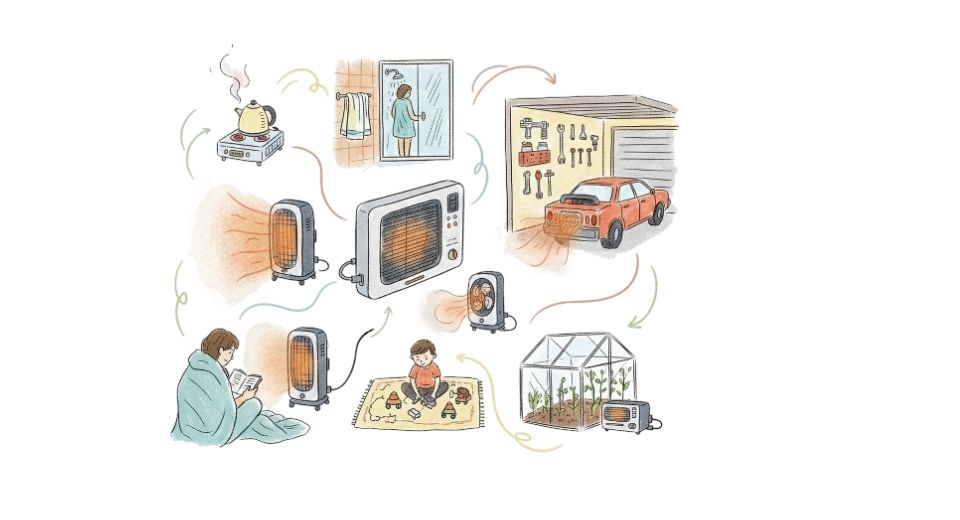
Oct 26, 2025

In homes and offices globally, the need for improved, more efficient heating is greater than ever. Metastat Insight global electric heater market fills this need, delivering capabilities that maintain environments at comfort levels, adjust to changing energy prices, and fit into the smart-connected home. With older heating technologies struggling under the pressure of mounting expectations, the need for contemporary Electric Heaters continues to rise.
Market Context
Numerous buildings continue to use older, inefficient, high-cost-to-serve, or poorly adapted to newer comfort and control needs systems. Urbanization, compact building envelopes and electrification of the building stock all create new challenges for heating technologies. The Electric Heater market meets these by providing compact, responsive and more controllable responses to traditional techniques. Apart from space-heating in the domestic market, demand is increasing in commercial and industrial applications where flexibility and high-speed deployment are critical. With retrofit potential plentiful, Electric Heater manufacturers sit as catalysts for upgrade cycles and comfort increases where once more inflexible systems had a grip. How It Works and What Makes It Valuable
Electric Heaters transform electrical energy into warmth by resistive elements, convection modules or infrared emitters.
Their value lies in simplicity: installation often involves minimal ductwork or piping, making them well-suited for both new builds and retrofits. Many modern designs incorporate programmable thermostats, remote control and zone-based regulation features that bring greater control and reduce waste. Efficiency gains are realised when unused rooms can be switched off or when temperature can be adapted to occupancy rather than maintained constantly. Principal uses are residential bedrooms, offices, shops and light-industrial settings where focused, controlled heat is ideal. The ability to interface with smart home systems is an additional benefit: Electric Heaters that can learn to respond to scheduling or remote control offer convenience as well as cost savings. Growth Story and Technological Evolution. At first, Electric Heaters were mostly traditional, single-function units with no control.
Manufacturers over the years have added capabilities like digital timers, remote sensors and silent fan-driven convection models.
In the recent past, the availability of IoT, voice control and smart-thermostat compatibility has gathered speed. At the same time, thermal materials and heater element design have become better, with quicker heat-up times and enhanced safety standards. Adoption has grown beyond supplemental heating to full-zone use in homes and commercial environments.
The market is also assisted by regulatory pushes toward more efficient appliances and by trends in construction that prefer modular, electric-first solutions. These advancements have consolidated the Electric Heater market's position as a legitimate alternative to more complex systems. Regional and Global Trends Adoption is highest in cold climates and countries with pre-existing infrastructure for electricity consumption but even in countries with increasing awareness of energy efficiency.
For instance, the Asia-Pacific has a dominant market share due to rapid urbanization and manufacturing hubs. North America and Europe remain to exhibit heavy adoption, particularly as building codes become more stringent and smart home adoption increases.
On the front of emerging markets, South Asian and selected Latin American countries offer high potential: as access to electricity increases and building inventory becomes modernised, electric heating emerges as an affordable upgrade. The increased demand in the likes of India for comfort solutions in residential settings during the colder seasons is a good example of this trend.
Challenges and Opportunities
There are various hurdles that still exist. Up-front investment and the impression of greater operating cost than fuel-based systems can suppress take-up. Regulatory structures are highly variable, and manufacturers have to comply with changing safety and efficiency norms.
Competition from alternative heating methods e.g., heat pumps or direct renewable systems is also a source of pressure. The positive side includes gains in materials, enhanced control systems, and the push towards decarbonised buildings, all of which benefit the Electric Heater market. Smart home connectivity gives rise to new product categories and recurring value, but retrofits in existing buildings offer a huge underserved market. Integration with building-automation and energy-management systems creates additional growth opportunities, as Electric Heaters are part of broader digital ecosystems.
Why It Matters Now
In an age of sustainability, energy efficiency, and resilience, heating cannot be an afterthought. The international Electric Heater market reported by Metastat Insight comes at the crossroads of digitalization in residential and commercial buildings, infrastructure electrification, and efforts towards decreasing carbon footprints. Being capable of quick response, integration and provision of controlled heating, contemporary Electric Heaters find themselves part of solutions to broader challenges like climate change, building decarbonisation, and user comfort optimisation.
As electric grids get cleaner and smart buildings become the norm, efficient electric heating is playing a more important role. The global electric heater market is not merely about getting warm it is about transforming how buildings accommodate new needs and new expectations for comfort, control and sustainability.
Drop us an email at:
Call us on:
+1 5186502376
+91 73850 57479